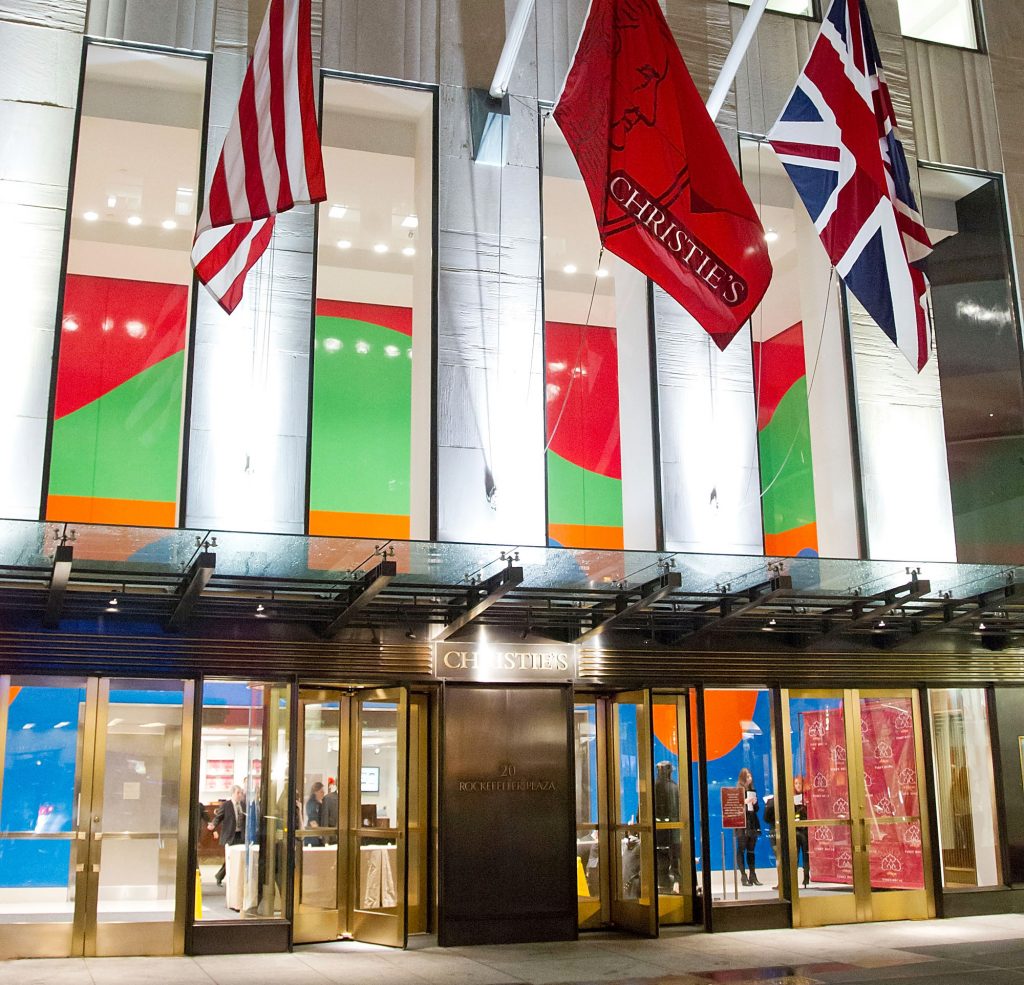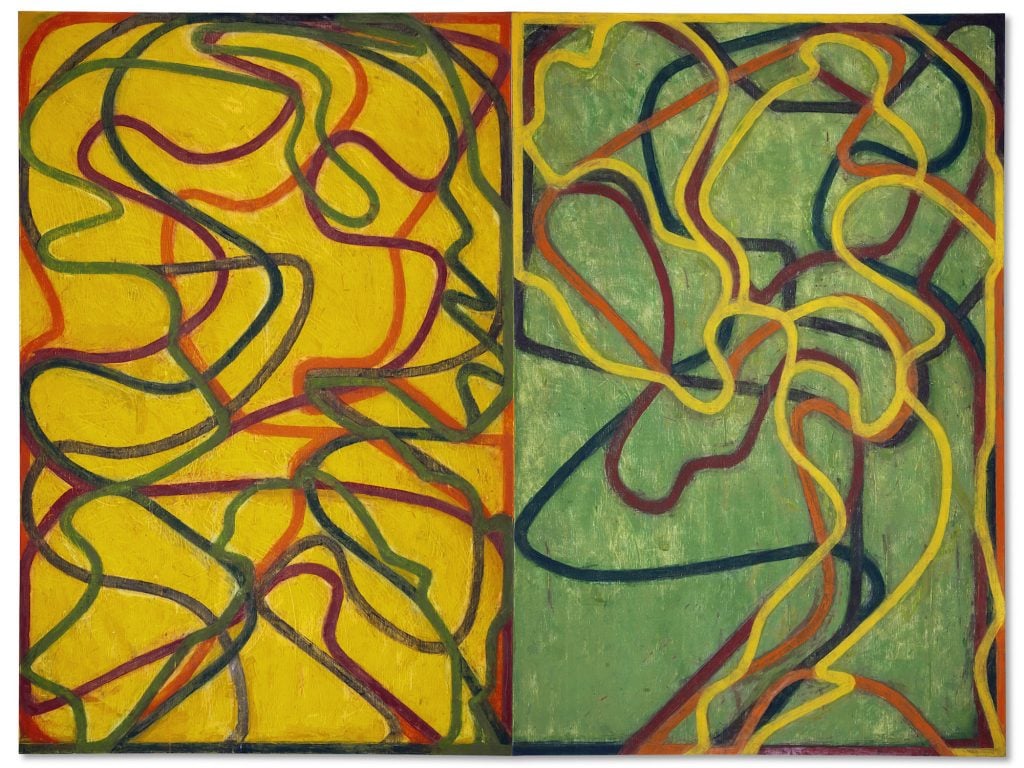Art World
‘Devastating’: Experts React as Suspected Cyberattack Keeps Christie’s Website Offline During Marquee Auction Week
Opinions varied about how damaging the outage could be.

Opinions varied about how damaging the outage could be.

Brian Boucher

It is not a good week for an auction house to suffer a technological failure, but that is what Christie’s is facing as it prepares for its marquee New York auctions of Modern, contemporary, and Impressionist art. Since Thursday, the house’s website has displayed a message saying that it is offline and supplying phone numbers to contact its various locations. While the house has only called it a website outage, it is widely thought to be a cyberattack. The house’s app displays a message that it was down for “scheduled maintenance.”
The major evening sales at the house’s Rockefeller Center sales room this week are anticipated to total as much as $640 million. The house confirmed in a statement that New York sales will go ahead as planned despite this “technology security incident.”
“Clients will be able to bid securely in person, on the phone, by absentee bid, and online via Christie’s LIVE,” said the auctioneer.
The biggest-ticket item is a Brice Marden canvas that may go for as much as $50 million. That painting is part of Tuesday’s 21st century sale, expected to total at least $104 million and including a Basquiat estimated at $30 million. On the same night, the house will offer 26 works from the collection of Miami art patron Rosa de la Cruz for as much as $37 million.

Brice Marden, Event (2004–07). Image courtesy Christie’s Images ltd.
Thursday’s 20th century evening sale may total as much as $500 million, led by a $35 million Van Gogh along with works by auction fixtures like David Hockney, Pablo Picasso, and Andy Warhol. Day sales of various material take place Friday and Saturday.
Eight auctions will proceed, said CEO Guillaume Cerutti, though a watches auction will be postponed. Marquee sales such as these account for about half the house’s annual revenue. The house created a stopgap using a web design company called Shorthand, where it is hosting catalogs of the sales, but that site does not host bidding or registration. According to its website, Shorthand’s clients include Dow Jones, Honda, Nikkei, and TripAdvisor.
“Christie’s has in place well-established protocols and practices, which are regularly tested, to manage such incidents,” said Christie’s in an emailed statement. “Our executive team, working with a team of internal and external technology experts, are taking all action to resolve this matter as quickly as possible. Christie’s proactively took down some of our systems, including Christies.com to facilitate the work of the I.T. teams. We have communicated to our clients and are keeping them informed. Our focus remains on minimizing disruption to them.
“Our pre-sale exhibitions have been very busy, with great enthusiasm from our clients, and we are looking forward to this week’s auctions,” said the house.
It was not immediately clear whether it is only the public-facing website that is affected, or whether any client information was at risk. Christie’s did not immediately answer an email requesting clarification.
“You can look at my website and find out information about my company and me and what we do, but that’s not where my company lives,” said art advisor Megan Fox Kelly, commenting on the difference between the two kinds of hacks. “I really can’t imagine that valuable data is exposed. It’s too sophisticated a company. And yet, it’s no less devastating that the promotional website goes down the week before the spring sales. Now they have to pivot to find out how to effectively stage these sales.”
All the same, one observer wondered if the perception might be worse than the reality.
“If I were one of their customers, I would be freaking out about the security of my information,” said Erin Thompson, a professor of art crime at John Jay College in New York. “Everyone who registers to bid has to give credit card or bank account information. There’s also a chain of ownership history for artworks that people do not want to become known for various reasons.”
She also anticipated there could be serious ramifications for the sales themselves or for the house in the weeks to come, if consignors are dissatisfied with the results.
“I wouldn’t be surprised if people pulled their works from the sale, or sued after because the conditions of sale were not as promised,” Thompson said. “A lot will depend on the nitty-gritty of the contracts. It would be interesting in a court of law. Business interference from cyberattack does not have a rich case history.”
Art lawyers were skeptical that such a suit would be successful.
“As a person who has sued and defended auction houses, I think it would be a tough case to prove given all the efforts Christie’s has made,” said attorney John Cahill. “Not everyone can be happy in an auction, but I think it would be hard to prove that some people weren’t able to bid.”
Speaking off the record, another legal expert said: “In most contracts, that kind of attenuated claim for consequential damages is not permitted. How can you put a number on what could have happened but for something like this?”
Christie’s was also found to be vulnerable last year, when ZenTrust Partners discovered that anyone with a browser could find the exact locations of artworks owned by some of the world’s top collectors. About 10 percent of the images contained GPS coordinates pointing to the location of the artworks, and the house took weeks to repair the situation after it was informed by ZenTrust.
While the current situation is unquestionably inconvenient for the house, some experts note that there could be an upside: for buyers, that is, who could get deals as a result of the uncertainty in a time when the market is already down.
It is unclear how much it would affect the sales if clients could not bid online. In a July 2023 conference call with reporters, Cerutti noted that nearly 80 percent of bids in all auctions are now placed online, and that that number had skyrocketed since 2019, when the rate was 45 percent, before the Covid-19 pandemic temporarily shut down in-person sales. The house has not said whether online bidding can take place in the upcoming sales and did not immediately answer an inquiry about what percentage of bids for the major evening sales come via that channel.
Last year, Christie’s reported total sales of $6.2 billion, down from $8.4 billion in 2022, which was its best year ever. Most of that was auction sales, which came in at $5.03 billion, down from the $7.2 billion reported last year.
The auction house isn’t alone in weathering a digital disruption. Cyberattacks have also recently taken down major health care providers; nonprofit organizations like the British Library and various American museums have also been targeted, resulting in website outages.
Experts voiced varying reactions to the uncertainty.
One New York art advisor professed to being “shocked” that the house did not postpone the sale, and anticipated some consignors might be likely to withdraw works.
Others are not sure the consequences would be so dire.
“It can slow down the auction,” New York advisor Todd Levin told Artnet News’s Katya Kazakina. “People get frustrated. It can add up to a possibility for a deal here and there. It doesn’t put people in a super confident, up mood. It’s just another thing on a pile that went wrong. There’s enough going on. You have two wars, there’s a presidential election coming up. And a major auction house couldn’t get its catalogs up for three days. It’s a thing.”
One expert felt some sympathy for the house.
“This is every business owner’s worst nightmare, something like this happening at a crucial moment,” says New York art dealer-advisor Cristin Tierney. “I am team Christie’s on this. Hats off to them for figuring out a workaround. I’m still getting emails, condition reports, and everything I need from them.”
Of course, for generations auction houses have relied on one-on-one phone calls and in-person bidding to get the job done, and they may simply be able to revert to those time-tested methods.
But Tierney also said that the whole episode reinforces the risks of the technology we’ve all become so dependent on.
“We still keep a deal binder in hard copy,” she said. “This is why.”